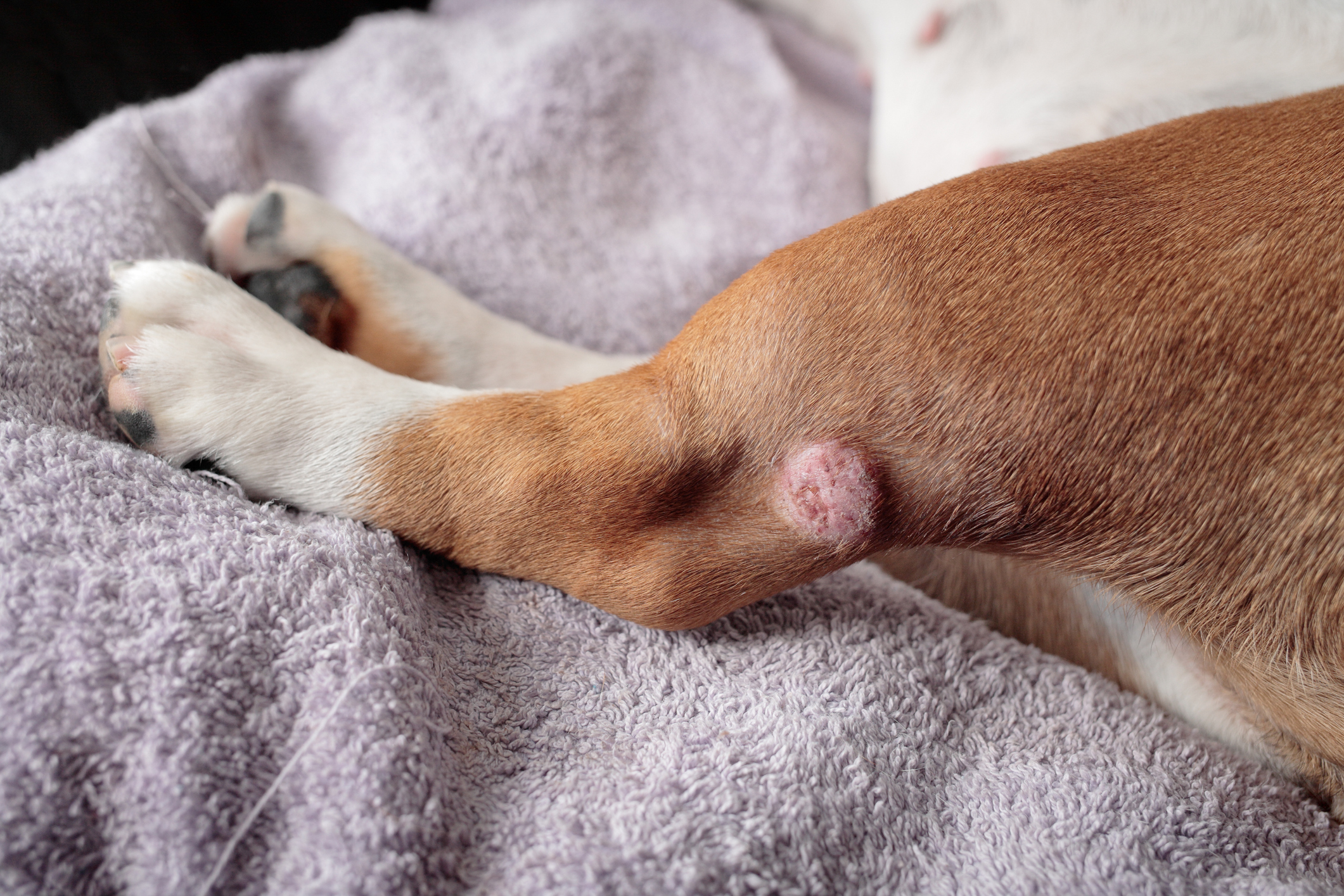
4 Types of Skin Cancer in Dogs
Whether due to UV ray exposure or other factors, dogs are susceptible to skin cancer. While cancer of any type is terrifying to most pet parents, in the case of canine skin cancer, the condition is often easier to identify and to treat before it becomes much more serious.
But there isn’t just one form of skin cancer that can afflict dogs. There are actually multiple types of cutaneous dog cancer, each with its own unique characteristics. Here are four of the most common forms of skin cancer that can affect dogs.
1. Mast cell tumors
Mast cell tumors are the most common form of skin cancer in dogs. These masses affect the mast cells, which form and repair connective tissue, form blood vessels and help regulate immune responses.
The cause of mast cell tumors is unknown. Numerous things are suspected to be linked to the cancer, including genetics, inflammation and skin irritants. Boston Terriers, Boxers, Pugs, and Bulldogs are more prone to developing mast cell tumors.
These tumors are most often found on a dog’s trunk but can occur on the limbs and other body parts. Mast cell tumors can vary in size, ranging from very small to medium-sized masses. They can also change size themselves due to periodic swelling. Mast cell tumors release histamine, which means they are often itchy. Dogs afflicted by them will often chew or scratch at the area for relief.
Most mast cell tumors will require surgical removal.
2. Melanoma
Unlike in humans, where exposure to UV rays from the sun often leads to melanoma, dogs can develop melanoma without frequent sun exposure. Melanoma can be benign or malignant. Unfortunately, malignant melanoma has the capacity to spread quickly, making it much more dangerous.
Melanoma commonly causes small to medium-sized black growths on the skin. The skin around these masses may become red and swollen. This form of skin cancer often leads to tumors on the toes, as well as in the mouth and on the lips.
Oral melanoma is more difficult to treat, since masses will need to be removed surgically and can affect the jaw. Oral melanoma is also likely to spread to other parts of the body rapidly, quickly affecting the lymph nodes and lungs.
On the toes, melanoma tumors might cause swelling and discomfort, forcing your pup to limp or move awkwardly. Tumors on the foot pad or nail bed may necessitate amputation.
3. Squamous cell carcinoma
The outermost layer of your dog’s skin is called the squamous epithelium. It is this tissue that is affected by squamous cell carcinoma. Fortunately, this type of skin cancer is less common in dogs.
One of the main causes of squamous cell carcinoma in dogs is overexposure to the sun. This is particularly true in dogs with very light or thin fur, where UV rays can penetrate the skin more easily.
The masses caused by squamous cell carcinoma are often firm, raised and light in color. Over time, the tumor might form an open sore that won’t heal. The cancer is known to cause lots of tissue death in the areas affected.
Squamous cell carcinoma tumors need to be frozen off or surgically removed. This is often followed up with radiation or chemotherapy to ensure the cancer has not spread.
4. Fibrosarcoma
Fibrosarcoma is a type of skin cancer in dogs that affects connective tissues further beneath the skin’s surface. The cause of these tumors is not well understood.
Most fibrosarcoma tumors are found on the limbs of dogs or on the trunk. They typically cause firm, fleshy lumps under the skin.
Fortunately, tumors caused by fibrosarcoma tend to grow slower than other forms of cancer and have a lower risk of spreading throughout the body. Surgical removal is usually necessary, although recurrence is relatively common.
Skin cancer can be identified and treated

One of the biggest dangers of dog cancer in general is that it’s often hard to identify before it affects multiple areas of your pup’s body. This is less true with skin cancer. The presence of visible skin changes, lumps and bumps increase the likelihood that you’ll spot the signs of cancer early and get them treatment, improving your dog’s prognosis.
It’s imperative that you check for lumps and bumps on your dog’s skin routinely to ensure no benign or malignant tumors are present. If you notice a lump, it’s a good idea to have your vet check it out—there’s no easy way to tell whether a mass is cancerous with the naked eye. Fortunately, with prompt veterinary attention and treatment, cancerous growths can be removed relatively easily, helping your dog live a longer, more comfortable life.


